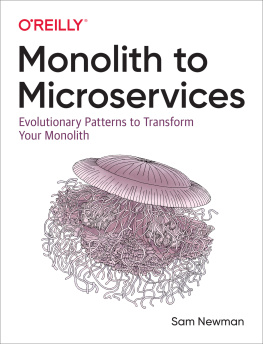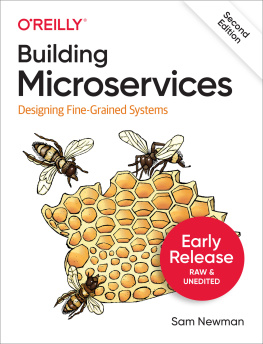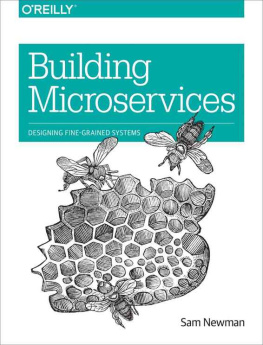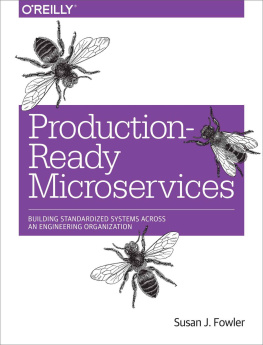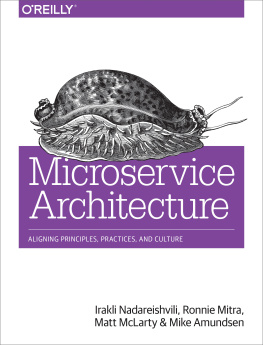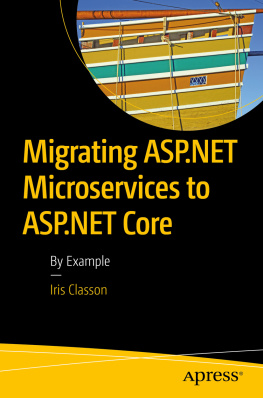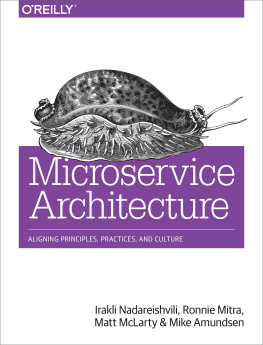A few years ago, some of us were chatting about microservices being an interesting idea. The next thing you know its become the default architecture for hundreds of companies around the world (many probably launched as startups aiming to solve the problems microservices cause), and has everyone running to jump on a bandwagon that they are worried is about to disappear over the horizon.
I must admit, Im partly to blame. Since I wrote my own book on this subject, Building Microservices, back in 2015, Ive made a living working with people to help them understand this type of architecture. What Ive always tried to do is to cut through the hype, and help companies decide if microservices are right for them. For many of my clients with existing (non-microservice-oriented) systems, the challenge has been about how to adopt microservice architectures. How do you take an existing system and rearchitect it without having to stop all other work? That is where this book comes in. As importantly, Ill aim to give you an honest appraisal of the challenges associated with microservice architecture, and help you understand whether starting this journey is even right for you.
What You Will Learn
This book is designed as a deep dive into how you think about, and execute, breaking apart existing systems into a microservice architecture. We will touch on many topics related to microservice architecture, but the focus is on the decomposition side of things. For a more general guide to microservice architectures, my previous book Building Microservices would be a good place to start. In fact, I strongly recommend that you consider that book to be a companion to this one.
contains an overview of what microservices are, and explores further the ideas that led us to these sorts of architectures. It should work well for people who are new to microservices, but I also strongly urge those of you with more experience to not skip this chapter. I feel that in the flurry of technology, some of the important core ideas of microservices often get missed: these are concepts that the book will return to again and again.
Understanding more about microservices is good, but knowing if they are right for you is something else. In , I walk you through how to go about assessing whether or not microservices are right for you, and also give you some really important guidelines for how to manage a transition from a monolith to a microservice architecture. Here well touch on everything from domain-driven design to organizational change modelsvital underpinnings that will stand you in good stead even if you decide not to adopt a microservice architecture.
In Chapters is a deep dive on data issues. If you really want to move from a monolithic system to a microservice architecture, well need to pull some databases apart!
Finally, looks at the sorts of challenges you will face as your microservice architecture grows. These systems can offer huge benefits, but they come with a lot of complexity and problems you wont have had to face before. This chapter is my attempt at helping you spot these problems as they start to occur, and at offering ways to deal with the growing pains associated with microservices.
Conventions Used in This Book
The following typographical conventions are used in this book:
ItalicIndicates new terms, URLs, email addresses, filenames, and file extensions.
Constant widthUsed for program listings, as well as within paragraphs to refer to program elements such as variable or function names, databases, data types, environment variables, statements, and keywords.
Constant width boldShows commands or other text that should be typed literally by the user.
Constant width italicShows text that should be replaced with user-supplied values or by values determined by context.
Tip
This element signifies a tip or suggestion.
Note
This element signifies a general note.
Warning
This element indicates a warning or caution.
OReilly Online Learning
Note
For more than 40 years, OReilly Media has provided technology and business training, knowledge, and insight to help companies succeed.
Our unique network of experts and innovators share their knowledge and expertise through books, articles, conferences, and our online learning platform. OReillys online learning platform gives you on-demand access to live training courses, in-depth learning paths, interactive coding environments, and a vast collection of text and video from OReilly and 200+ other publishers. For more information, please visit http://oreilly.com.
How to Contact Us
Please address comments and questions concerning this book to the publisher:
- OReilly Media, Inc.
- 1005 Gravenstein Highway North
- Sebastopol, CA 95472
- 800-998-9938 (in the United States or Canada)
- 707-829-0515 (international or local)
- 707-829-0104 (fax)
We have a web page for this book, where we list errata, examples, and any additional information. You can access this page at https://oreil.ly/monolith-to-microservices.
Email to comment or ask technical questions about this book.
For more information about our books, courses, conferences, and news, see our website at http://www.oreilly.com.
Find us on Facebook: http://facebook.com/oreilly

